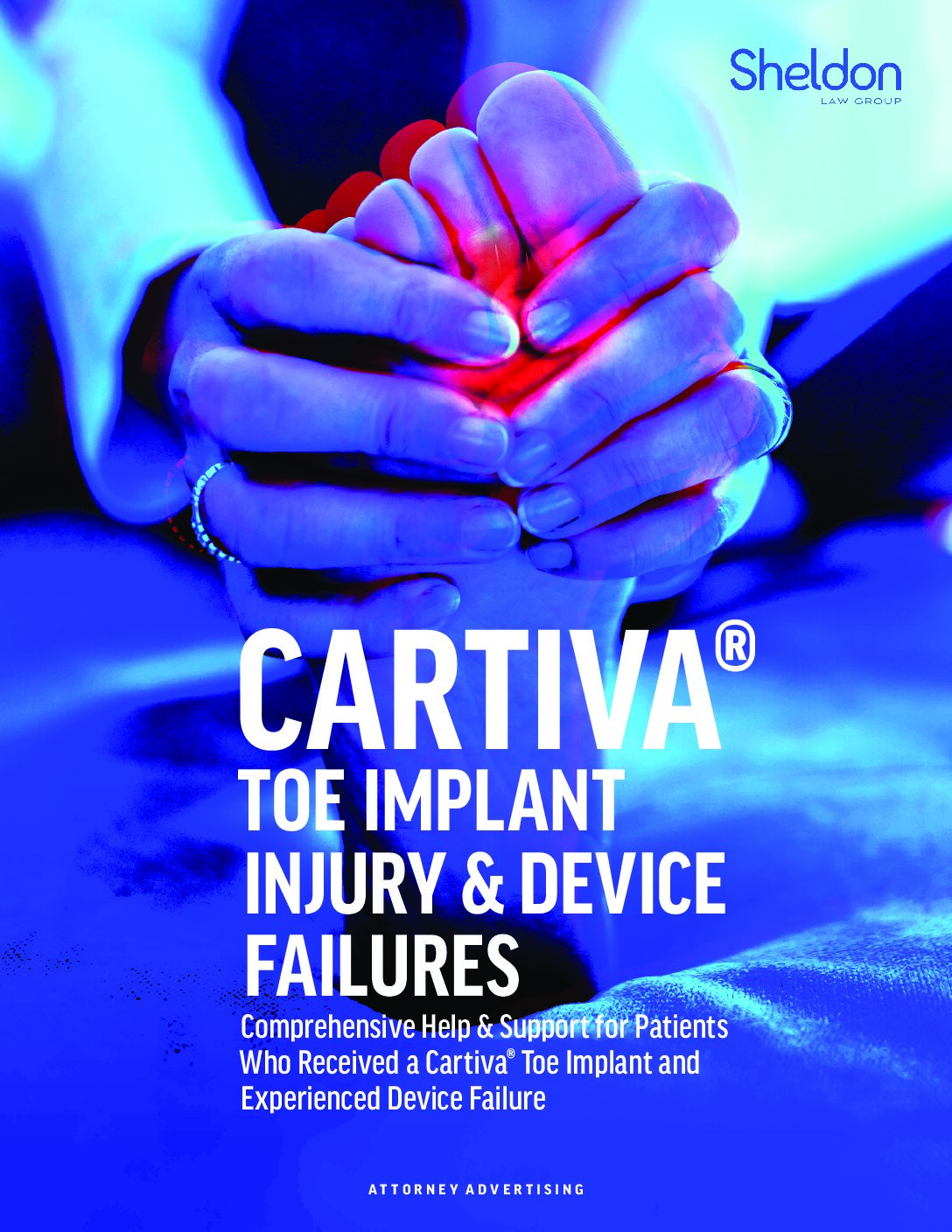Surgical Approaches to Cartiva Toe Implant Complications
While the Cartiva toe implant is one solution for hallux rigidus (big toe arthritis), the device is facing increased scrutiny due to reported complications. For some patients, the promise of pain relief has given way to the need for revision surgery.
Get A 100% Free CASE EvaluationCartiva Complications
Not all complications necessitate revision surgery, however a higher-than-expected number of patients have been forced to undergo additional surgery after receiving a Cartiva big toe implant. Patients may require surgical intervention due to:
- Fractures: The implant’s alleged susceptibility to fracture under everyday stress can lead to significant pain and instability.
- Subsidence: The implant can sink into the surrounding bone, causing pain, limited mobility. to correct.
- Implant wear and tear: Gradual wear and tear can lead to debris build-up and inflammation, ultimately necessitating removal or replacement.
- Foreign body reactions: The body may reject the implant, triggering an inflammatory response that necessitates removal.
Surgical Solutions for Cartiva Big Toe Implant Complications
The most common options are joint fusion and joint replacement. Joint fusion involves removing the implant and any remaining cartilage and fusing the bones of the joint together with screws or plates. This eliminates the joint motion and pain, but also limits the footwear choices and activities of the patient. Joint replacement involves removing the implant and replacing it with a metal or ceramic device that mimics the natural joint.
Surgical Intervention for Toe Implant Complications
1. Removal and Debridement:
- This minimally invasive procedure involves removing the Cartiva implant and cleaning the surrounding area to address inflammation or infection.
2. Osteotomy with or without Fusion:
- This approach involves realigning the bones of the joint (osteotomy) and, in some cases, fusing them together (fusion) to provide long-term stability.
- This option is suitable for fractures or severe joint damage where preserving mobility is not a priority.
3. Joint Replacement:
- This surgery replaces the damaged joint with an artificial implant, offering a potentially more mobile alternative to fusion.
- It’s typically considered for younger patients with significant joint damage who prioritize preserving some degree of movement.
4. Minimally Invasive Techniques:
- In some cases, surgeons may utilize arthroscopic techniques to access the joint through small incisions, minimizing tissue damage and promoting faster recovery.
- This approach is often preferred for removal, debridement, and some osteotomy procedures.
Remember, selecting the optimal surgical approach depends on several factors, including:
- Specific Cartiva complication: Each complication necessitates a tailored approach based on its nature and severity.
- Individual needs and preferences: Patient age, activity level, and desired outcomes play a crucial role in decision-making.
- Surgeon’s expertise: Consulting a qualified foot and ankle surgeon experienced in revision surgeries is essential.
Open communication, thorough research, and a collaborative approach with your healthcare team are key to navigating the maze of Cartiva revision surgery.
If You Had to Have Revision Surgery After Receiving a Cartiva Toe Implant, We Can Help.
If you have suffered from complications after receiving a Cartiva Toe Implant, contact us now. We are fighting to protect the rights of patients allegedly injured by Cartiva toe implants and hold the device makers fully accountable for putting profits above the health and well-being of patients.
Patients who received a Cartiva toe implant and were forced to have revision surgery to remove or replace the device, may be entitled to significant financial compensation. Contact us now to learn more about your rights and whether you are entitled to compensation.

